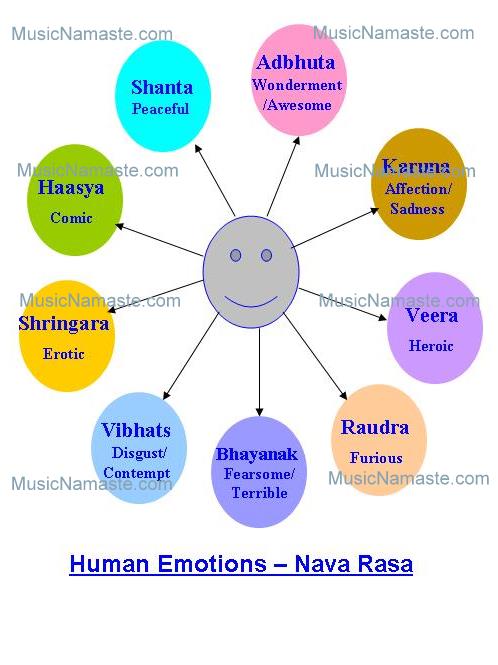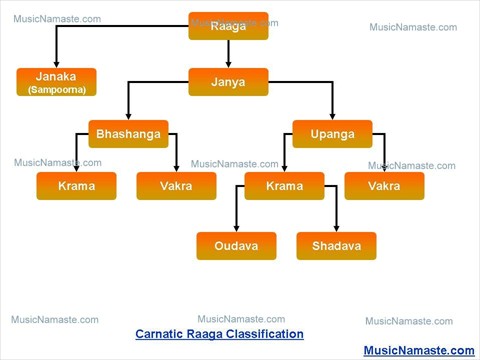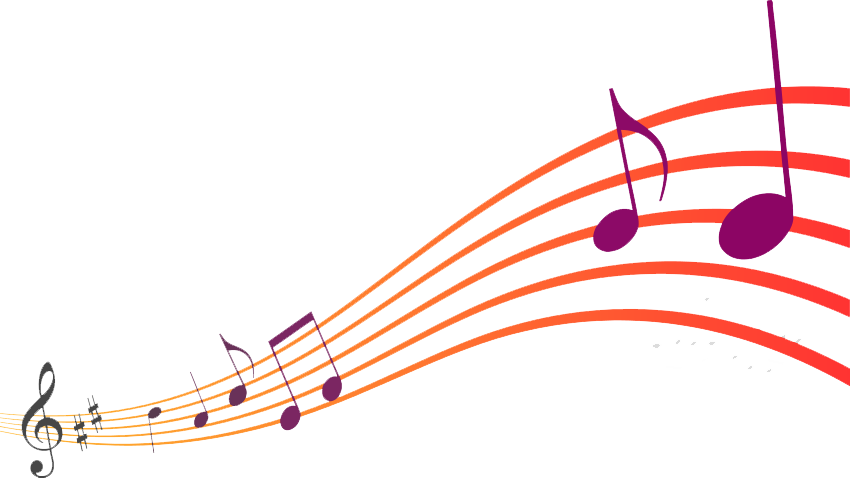A “Raaga” is a combination of “Swaras” or notes. Indian Classical Music thrives on “raaga”. A “raaga” is not just a melody or a tune. It is the name given to any melody that always comprises of a predetermined set of “swaras” occurring in a pattern. A special note on “raaga” is that “raaga” or “raag” in Indian Classical music has a very definitive mood attached to it. Also, every “Raaga” is best effective when sung at a certain time of the day. A “Raaga” is known to evoke a certain emotion in the listener and this emotion occurs when the “Raaga” is sung during a certain time of the day. A mood or emotion referred above is actually a term referred in Indian language as “Rasa”. “Rasa” literally means juice or essence. Indian culture identifies 9 types of “rasas” referred to as “nava rasa” (9 Juices ). Every possible emotion a human mind can feel can be mapped to one of the “rasa” mentioned below.

Below are examples of some “raagas” from Carnatic music and their mood and timing characteristics.
1. “Raaga MayamalavaGaula” –
Nature :”Shanta” Timing: Early morning
2. “Raaga Mohana”
Nature :”Veera” / “Haasya” Timing: Mid Day Afternoon
Below are examples of some “raags” from Hindustani music and their mood and timing characteristics.
1. “Raag Bhairavi”
Nature of the Raag – “Gambhir” – Serious, Timing – Evening
2. “Raag Bhupali”
Nature of the “Raag” – “Shant” – Serene, Quiet, Peaceful, Timing – Early hours of the night
3. “Raag Vihag”
Nature of the “Raag” – “Karun” – Sad, Timing – Second half of the night
4. “Raag Desh”
Nature of the “raag” – “Karun” – Sad, Timing – Second half of the night
Apart from time of the day, some “raags” which are associated with particular seasons – “Raag Megh Malhar” or “Gaud Malhar” from Hindustani music to be sung during the rainy monsoon season. Similarly Hindustani “Raag Basant” is associated with the Spring season. “Raaga” system is quite complex. Even today it takes years for seasonal artists to master one or several “Raagas”. The evolution of “Raagas” or “Raags” and their classification is quite scientific. One wonders how such a complex system of music evolved thousands of years ago.
There are two basic types of Raagas – Janaka Raaga and Janya Raaga. Raagas are also classified as Sampoorna, Oudhava and Shadhava Raagas, based on the number of Swaras in each Raaga.
Please see illustration below –

| Janaka Raaga |
A Raaga where all the seven Swaras are present and are present in the sequence of Sa-Ri-Ga-Ma-Pa-Dha-Ni in the Aarohana and also the Avarhohana features the same 7 Swaras in the reverse order – Sa-Ni-Dha-Pa-Ma-Ga-Ri-Sa is called a Janaka Raaga.There are 72 such unique Raagas. Janaka ( Mother ) Raaga has given birth to hundreds of Janya Raagas which are a subset of the Janaka Raagas.Eg of Janaka Raaga : MayamalavaGaula, Mecha Kalyani, |
| Janya Raaga |
A Janya Raaga is a Raaga formed from its Janaka Raaga Swaras. There are two types of Janya Raagas -Upanga Raaga and Bhashanga Raaga. |
| Upanga Raaga |
A Janya Raaga which has the Swaras from Parent Raaga ,but is missing some swaras from the Parent Raaga is called a Upanga Raaga. Eg: HamsaDhwani , Shree |
| Bhashanga Raaga | A Janya Raaga which has the Swaras from Parent Raaga ,but also has additional Swaras not present in the Parent Raaga is called a Bhashanga Raaga.
Eg: Bilahari, Hari Kambhoji |
| Vakra Raaga |
A Janya Raaga where Swaras from the parents raaga are not necessarily in the sequence in the Janaka Raaga is called a Vakra Raaga. Eg: Vasantha, Shree |
| Sampoorna Raaga | A Sampoorna Raaga is one which has all the Seven Swaras in Arahohana or Avarhohana. |
| Oudhava Raaga |
An Oudhava Raaga is one which has 5 Swaras in either Arohana or Avarohana. |
| Shadhava Raaga |
A Shadhava Raaga is one which has 6 Swaras in either Arohana or Avarohana. |
